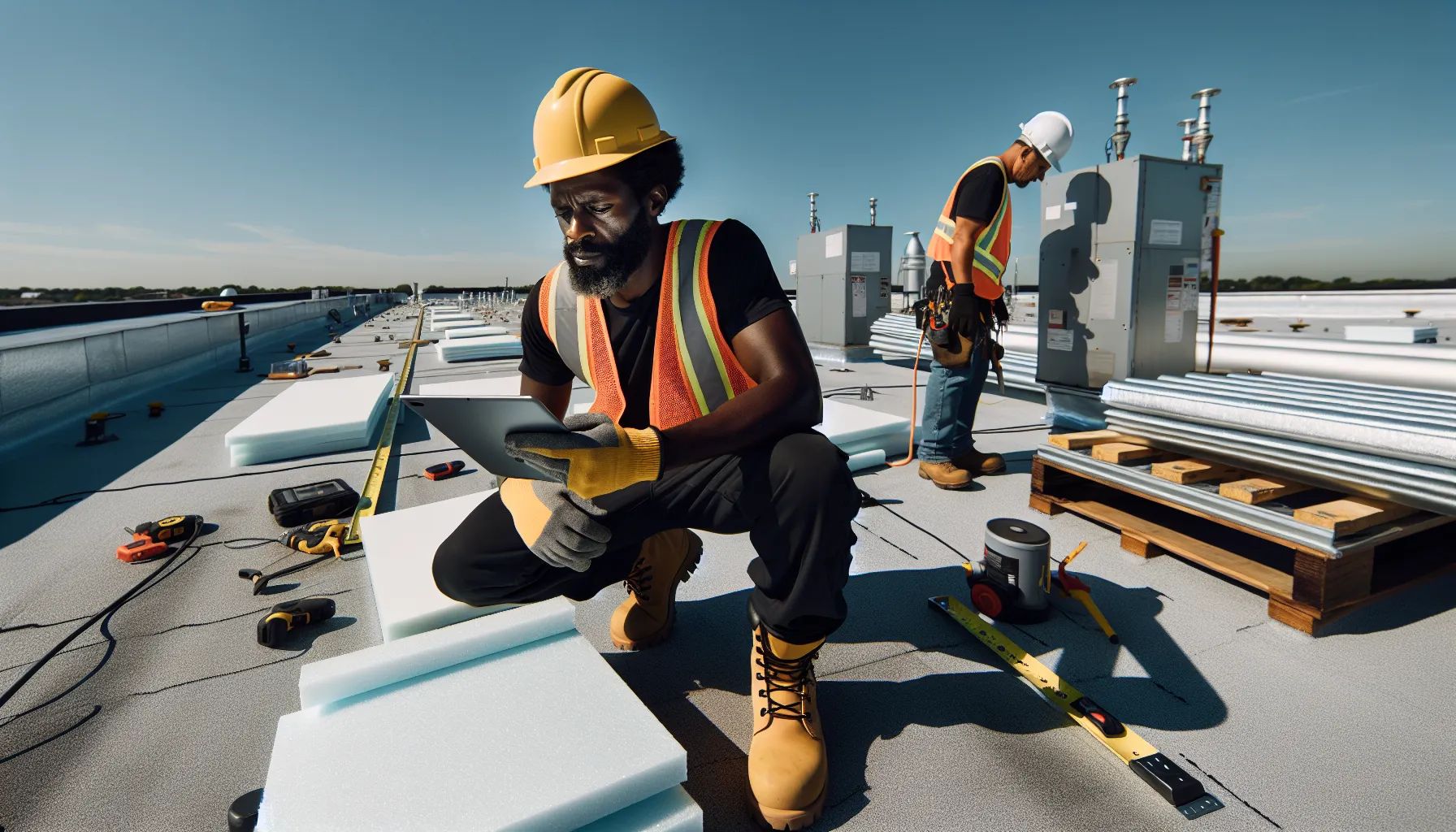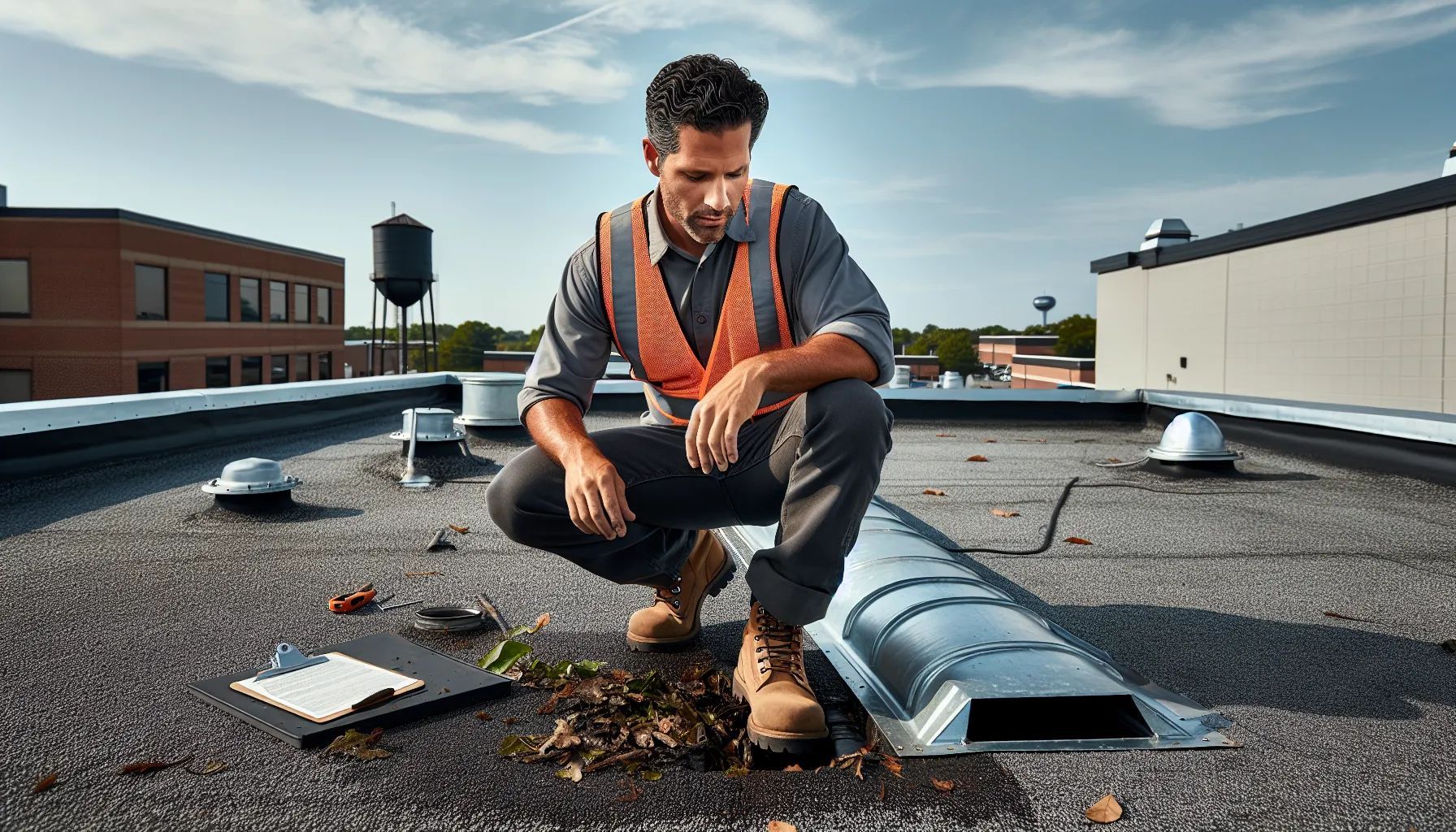Tile Roof Cleaning: Essential Guide to Protect Your Home
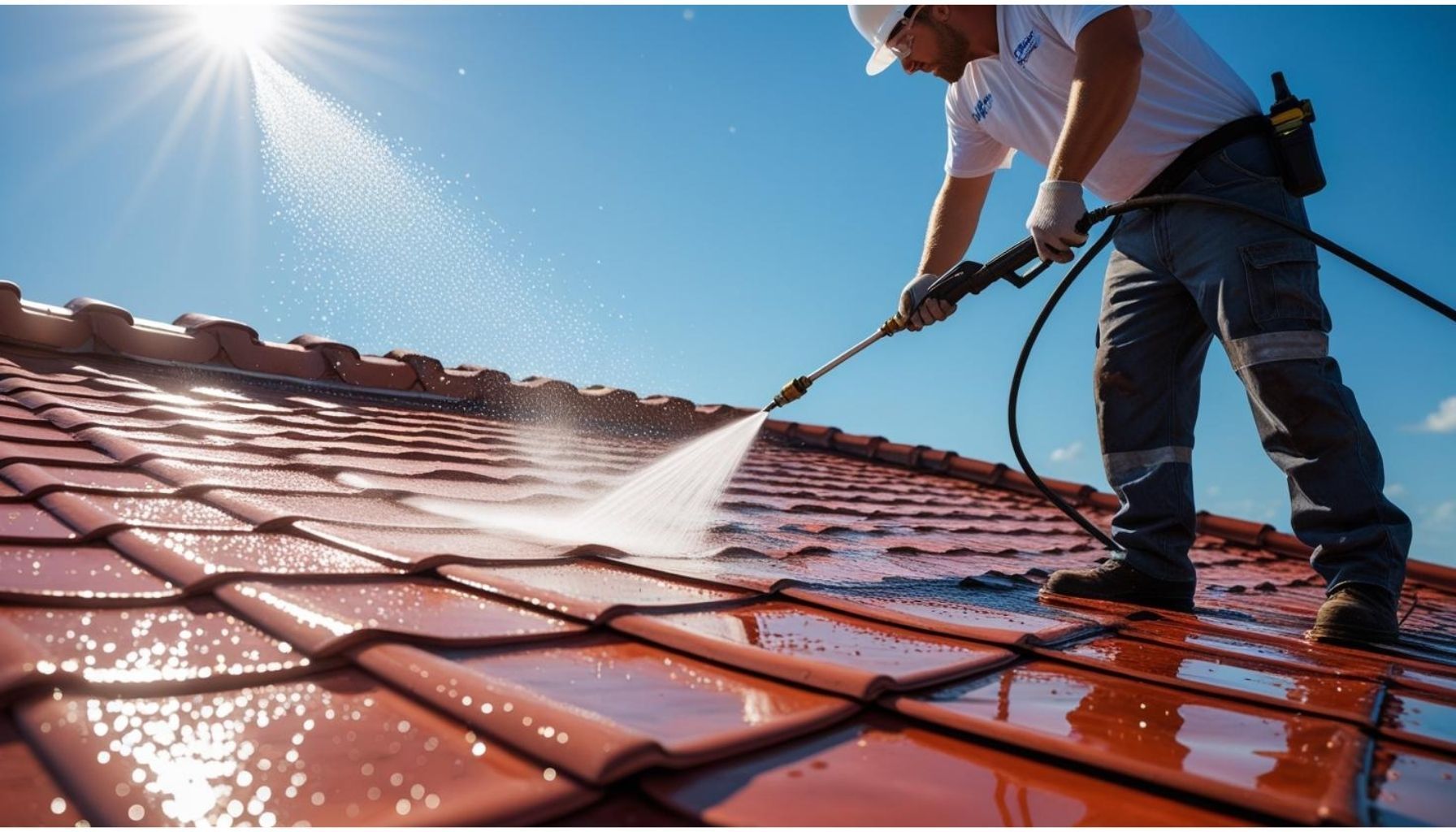
When it comes to maintaining our homes we often overlook tile roof cleaning until moss algae and debris have already taken hold. Yet this essential maintenance task can dramatically extend our roof's lifespan and protect our investment.
We've discovered that regular tile roof cleaning isn't just about curb appeal—it's about preventing costly damage that sneaks up on unsuspecting homeowners. From stubborn black streaks to hidden moisture problems the consequences of neglecting our tile roofs can be surprising.
Through years of experience we've learned that proper cleaning techniques make all the difference. But here's what most homeowners don't realize: the wrong approach can actually cause more harm than good. We'll explore the safest most effective methods that professionals use and reveal the common mistakes that could be damaging your tiles right now.
Why Tile Roof Cleaning Is Essential for Your Home
Prevents Costly Structural Damage
Accumulated debris creates moisture pockets between tiles. These pockets foster wood rot in the underlying decking and support structures. We've seen repair costs reach $5,000-$15,000 when homeowners delay cleaning for 3-5 years.
Water damage spreads quickly once it penetrates the protective barrier. A single compromised tile allows moisture into areas designed to stay dry. Regular cleaning removes debris before damage occurs.
Extends Roof Lifespan
Clean tile roofs last 50-100 years compared to 20-30 years for neglected ones. Dirt and organic growth accelerate tile degradation through chemical reactions and physical stress. We maintain tiles through cleaning every 2-3 years to maximize their service life.
Manufacturers void warranties when roofs lack proper maintenance. Documentation of regular cleaning preserves warranty coverage and protects your investment. Professional cleaning records serve as proof of maintenance during warranty claims.
Improves Energy Efficiency
Dark stains and algae absorb 20-30% more heat than clean tiles. This extra heat transfers into your attic and living spaces during summer months. Clean tiles reflect sunlight effectively and reduce cooling costs by 10-15%.
Proper ventilation depends on clear tile surfaces and unobstructed gaps. Debris blocks airflow channels between tiles and increases attic temperatures. We remove blockages to restore natural ventilation patterns.
Maintains Property Value
Curb appeal directly impacts home values by 5-10% according to real estate studies. Stained or moss-covered roofs signal neglect to potential buyers. Clean roofs demonstrate proper maintenance and attract higher offers.
Home inspectors flag dirty roofs as maintenance concerns. These red flags lead to price negotiations and repair requests. We help homeowners avoid value reductions through preventive cleaning.
Prevents Pest Infestations
Organic debris attracts insects like termites, carpenter ants, and roaches. These pests establish colonies in moist environments created by clogged tiles. Regular cleaning eliminates food sources and nesting materials.
Birds and rodents nest in accumulated leaves and branches on roofs. Their droppings create health hazards and additional cleaning challenges. We remove existing nests and prevent new infestations through thorough cleaning.
Ensures Proper Water Drainage
Tile roofs channel water through specific pathways to gutters. Debris disrupts these channels and causes water to pool or flow incorrectly. Standing water penetrates under tiles and damages waterproof membranes.
Ice dams form when debris blocks proper drainage in cold climates. These dams force water backward under tiles during freeze-thaw cycles. We clear drainage paths to prevent ice-related damage.
Identifies Hidden Problems Early
Professional cleaning reveals cracked tiles, loose flashings, and worn sealants. Early detection prevents minor issues from becoming major repairs. We document problem areas during cleaning for immediate attention.
Algae growth often indicates moisture retention problems. Black streaks show water flow patterns that reveal drainage issues. Regular cleaning provides opportunities to spot developing concerns.
Common Types of Tile Roofs and Their Cleaning Needs
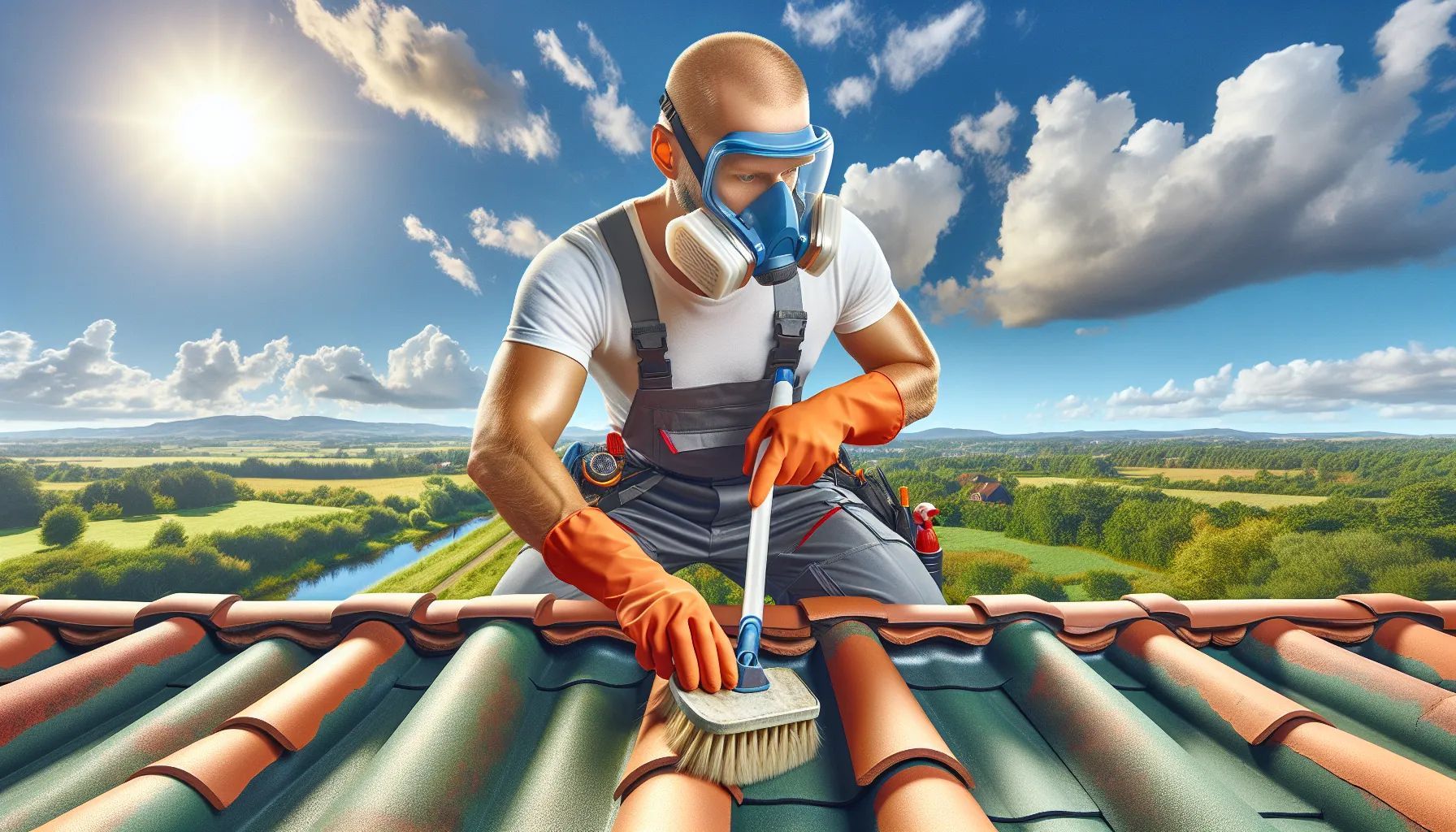
Different tile materials require specific cleaning approaches to maintain their integrity and appearance. We'll examine the three primary tile types—clay, concrete, and slate—and their unique maintenance requirements.
Clay Tile Roofs
Clay tiles consist of natural clay fired in kilns at temperatures reaching 2,000°F. These tiles typically display terracotta colors ranging from orange-red to brown. Clay tiles can last 100 years with proper maintenance.
Clay tiles require gentle cleaning methods to prevent damage. We recommend low-pressure washing at 1,200 PSI or less to remove dirt and debris. Manual scrubbing with soft-bristle brushes works best for stubborn stains.
Glazed clay tiles resist moss and algae growth better than unglazed varieties. Porous clay tiles absorb moisture and develop organic growth in shaded areas. These tiles need cleaning every 2-3 years in humid climates.
Walking on clay tiles causes breakage. Professional cleaners use roof ladders and weight distribution boards to prevent tile damage. Broken tiles cost $10-$30 each to replace.
We apply eco-friendly cleaners specifically formulated for clay surfaces. These solutions break down organic matter without damaging the tile's protective coating. Rinse thoroughly after chemical application to prevent residue buildup.
Concrete Tile Roofs
Concrete tiles contain sand, cement, and water mixed in specific ratios. These tiles absorb 13% more moisture than clay tiles. Concrete roofs typically last 50 years with regular maintenance.
Moss and algae grow readily on concrete tiles due to their porous nature. We treat these roofs with biodegradable chemicals that penetrate the surface and eliminate organic growth. Application requires 15-20 minutes of dwell time before rinsing.
The sandy surface layer (top collar) on concrete tiles erodes with aggressive cleaning. We use pressure settings below 1,500 PSI and maintain a 12-inch distance from the surface. Closer distances strip away the protective coating.
Concrete tiles in coastal areas accumulate salt deposits that accelerate deterioration. We remove salt buildup using specialized cleaners every 6-12 months. Regular cleaning prevents efflorescence and extends tile lifespan by 10-15 years.
Professional cleaning costs $0.30-$0.60 per square foot for concrete tile roofs. This investment prevents moss damage that leads to tile replacement costing $300-$500 per square.
Slate Tile Roofs
Slate tiles form from compressed metamorphic rock over millions of years. These tiles achieve water absorption rates below 0.4%. Quality slate roofs last 150 years or more.
Slate's density makes it highly resistant to organic growth. We clean slate roofs every 3-5 years compared to annual cleaning for other materials. Steam cleaning at 300°F effectively removes accumulated grime without chemical treatments.
Sound slate tolerates pressure washing up to 3,000 PSI. We test older slate tiles for delamination before applying pressure. Damaged slate produces hollow sounds when tapped with a hammer.
Slate cleaning preserves the natural patina that develops over decades. We avoid acidic cleaners that strip this protective layer. Proper cleaning maintains slate's distinctive appearance and weather resistance for generations.
Signs Your Tile Roof Needs Cleaning
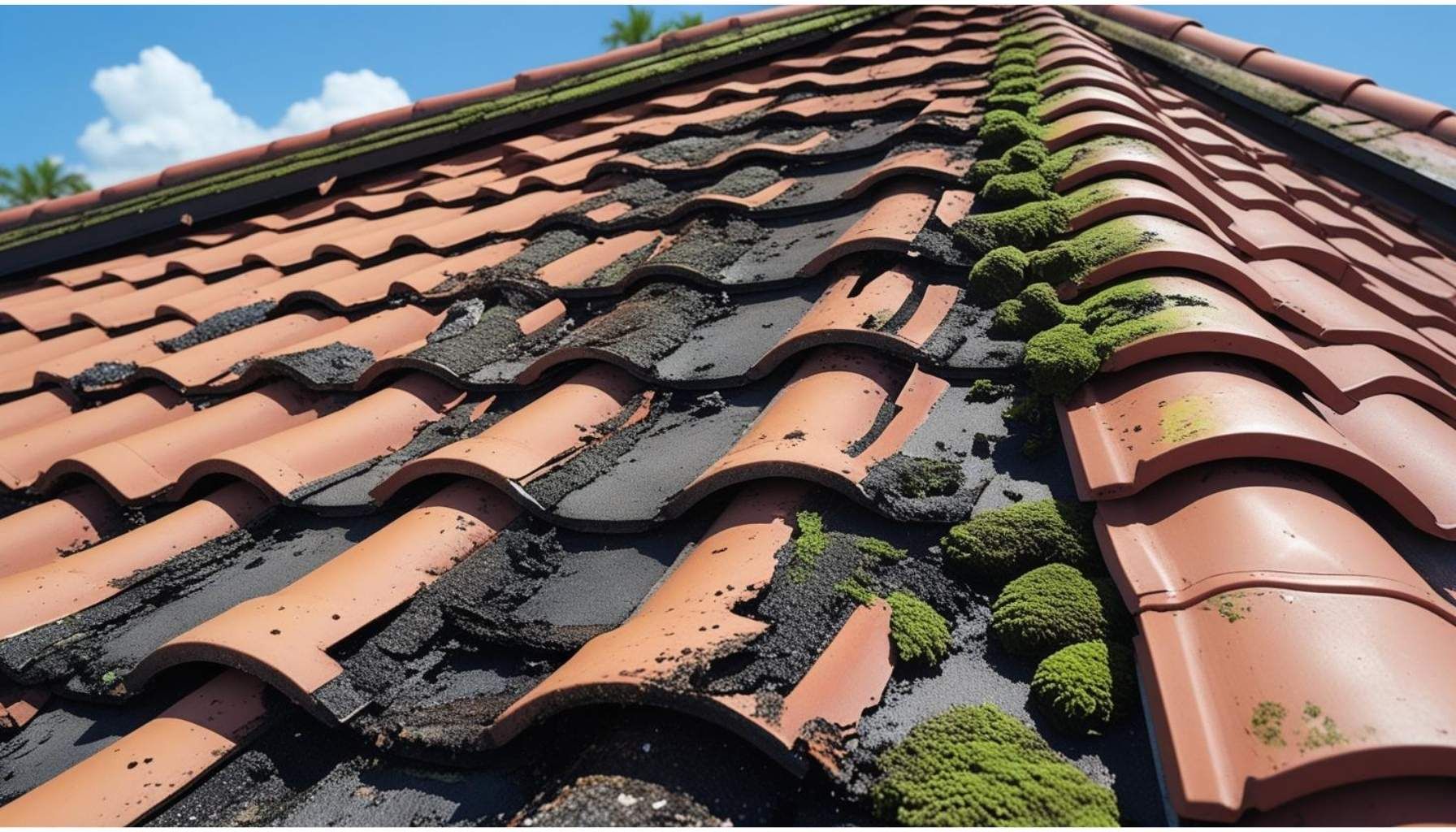
Tile roofs display specific warning signs when they require cleaning. We've identified key indicators that help homeowners recognize when professional cleaning becomes necessary.
Visual Indicators of Contamination
Dark streaks running down your roof tiles signal algae growth. These black or green marks appear most prominently on north-facing slopes where moisture accumulates. Algae colonies spread across tiles within 6-12 months if left untreated.
Discoloration patterns vary by contamination type. Black streaks indicate Gloeocapsa magma algae, while green patches suggest moss or lichen presence. Brown stains often result from rust deposits or tannin runoff from nearby trees.
Biological Growth Patterns
Moss thrives in tile gaps and creates thick green carpets across roof surfaces. Each moss colony retains 20 times its weight in water, increasing structural load by 5-10 pounds per square foot.
Lichen forms crusty patches that bond directly to tile surfaces. These organisms penetrate microscopic pores and create permanent etching if removal delays exceed 24 months.
Fungal growth appears as fuzzy white or gray patches. Fungi decompose organic matter trapped between tiles and release spores that spread contamination to adjacent areas.
Professional Assessment Methods
We evaluate tile roofs using systematic inspection protocols. Our assessment identifies contamination severity and determines appropriate cleaning approaches.
Inspection Techniques
Professional inspectors examine tiles from multiple angles. Ground-level observation reveals overall contamination patterns, while ladder inspection provides close-up evaluation of individual tiles.
Moisture meters detect water retention in tiles. Readings above 15% indicate biological growth has compromised tile porosity and cleaning becomes urgent.
Digital photography documents contamination progression. Before-and-after images track cleaning effectiveness and help schedule future maintenance intervals.
Cleaning Frequency Guidelines
Tile roofs require cleaning every 2-5 years depending on environmental factors. Climate conditions and surrounding vegetation influence contamination rates.
Environmental Factors
Humid climates accelerate biological growth. Roofs in regions with 70% average humidity need cleaning every 2-3 years, while arid climates extend intervals to 4-5 years.
Tree coverage impacts cleaning frequency significantly. Properties with overhanging branches accumulate debris 3 times faster than those with 20-foot clearance zones.
Coastal environments introduce salt deposits that attract moisture. Salt accumulation accelerates algae growth and requires annual cleaning within 5 miles of ocean shorelines.
Damage Prevention Strategies
Early cleaning intervention prevents expensive repairs. We recommend proactive maintenance based on contamination indicators rather than fixed schedules.
Cost-Benefit Analysis
Professional cleaning costs $450-$900 for average-sized roofs. Delayed cleaning leads to tile replacement costing $8,000-$15,000 when biological growth causes structural damage.
Insurance claims for water damage average $11,000 when clogged tiles cause leaks. Regular cleaning eliminates 90% of moisture-related insurance claims.
Property values increase 2-5% with clean roofs. Real estate appraisers deduct $5,000-$10,000 for visibly contaminated roofs during home valuations.
Health and Safety Concerns
Contaminated tile roofs create health hazards for occupants. Biological growth releases airborne particles that enter homes through ventilation systems.
Indoor Air Quality Impact
Mold spores from roof contamination infiltrate attic spaces. Spore counts exceed safe levels when roof cleaning delays surpass 3 years.
Allergen levels increase 40% in homes with contaminated roofs. Residents experience respiratory symptoms including coughing, sneezing, and asthma flare-ups.
Professional cleaning reduces indoor allergen levels within 48 hours. Air quality improvements persist for 2-3 years following thorough roof decontamination.
Warranty Compliance Requirements
Tile manufacturers specify cleaning requirements in warranty documents. Non-compliance voids coverage for premature tile failure.
Manufacturer Specifications
Clay tile warranties require biannual inspections and cleaning as needed. Documentation proves compliance during warranty claims for defective tiles.
Concrete tile manufacturers mandate removal of biological growth within 6 months of appearance. Warranty coverage extends 25 years with proper maintenance records.
Slate tile warranties emphasize gentle cleaning methods. High-pressure washing voids warranties and manufacturers recommend professional soft-wash techniques.
Emergency Cleaning Situations
Certain conditions require immediate tile roof cleaning. We prioritize these situations to prevent structural damage and safety hazards.
Urgent Response Criteria
Water leaks through tiles demand immediate attention. Biological growth blocks drainage channels and forces water beneath tiles within 72 hours.
Pest infestations in roof debris necessitate rapid cleaning. Rodents and insects nest in accumulated organic matter and damage underlying structures.
Storm damage exposes tiles to accelerated contamination. Post-storm cleaning within 30 days prevents permanent staining and biological colonization.
Professional vs. DIY Tile Roof Cleaning
Choosing between professional and DIY tile roof cleaning impacts both immediate costs and long-term roof health. We'll examine the advantages of each approach to help property owners make informed decisions.
Professional services employ specialized techniques and equipment that protect tiles while achieving superior cleaning results. Soft washing systems use controlled pressure between 500-1,200 PSI to remove contaminants without damaging clay or concrete surfaces. Trained technicians identify underlying issues during cleaning, such as cracked tiles or compromised underlayment, preventing minor problems from escalating into major repairs.
DIY cleaning attracts homeowners seeking immediate cost savings. Initial expenses include pressure washer rental ($75-$150 daily) and cleaning solutions ($30-$100). But, improper technique risks tile breakage, with replacement costs averaging $300-$500 per square. Also, standard garden hose attachments lack the reach and pressure control necessary for effective moss removal.
Safety considerations strongly favor professional services. Roof work accounts for 34% of construction-related falls, with tile surfaces becoming particularly slippery when wet. Professional crews use OSHA-compliant fall protection equipment and maintain liability insurance, protecting homeowners from injury-related lawsuits.
Benefits of Professional Cleaning
Professional cleaners achieve 95% contaminant removal rates compared to 60-70% with DIY methods. Industrial-grade biocides penetrate deeply embedded algae roots, preventing regrowth for 3-5 years. Technicians calibrate pressure settings based on tile age and composition, preserving protective glazes on clay tiles and avoiding surface erosion on concrete varieties.
Equipment advantages include telescoping wands reaching 40 feet, eliminating ladder repositioning. Professional-grade surfactants break down organic matter without harsh chemicals, protecting surrounding landscaping. Crews complete average 2,000-square-foot roofs in 3-4 hours, while DIY attempts typically require 8-12 hours across multiple days.
Cost analysis reveals long-term savings through professional services. While initial investment ranges $400-$800, prevented repairs save $2,000-$5,000 over five years. Professional cleaning extends tile lifespan by 15-20 years, delaying full replacement costs of $15,000-$30,000. Also, maintained roofs command 5-10% higher property values during sales.
When to Consider DIY Cleaning
DIY cleaning suits specific scenarios with minimal risk. Single-story homes with gentle slopes (4/12 pitch or less) allow safer access. Light surface dirt or isolated algae patches respond to gentle brushing with extension poles. Small sections under 200 square feet make manageable weekend projects.
Budget constraints sometimes necessitate DIY approaches. Basic cleaning supplies cost $50-$150, compared to $400+ for professional services. Homeowners comfortable with heights and possessing proper safety equipment can perform annual maintenance between professional cleanings. But, warranty considerations require documented professional cleaning every 2-3 years for most manufacturers.
Best Methods for Tile Roof Cleaning
Selecting the right cleaning method protects your tile roof investment and ensures optimal results. We've analyzed three primary approaches that professionals use to maintain tile roofs effectively while preventing damage.
Soft Washing Technique
Soft washing combines low-pressure water with specialized eco-friendly cleaners to remove organic growth safely. We apply cleaning solutions through pumps and tanks equipped with specialized nozzles that distribute chemicals evenly across tile surfaces. The process starts with applying biodegradable cleaners that break down moss, algae, and lichen without harming tiles or protective coatings.
Professional soft wash systems operate at 60-100 PSI compared to standard pressure washers that exceed 3,000 PSI. We let the cleaning solution dwell for 10-15 minutes before rinsing with low-pressure water. This technique removes 95% of organic growth while preserving tile integrity.
Soft washing works exceptionally well on clay tiles that crack under high pressure. We've found this method extends roof life by 20-30 years when performed every 2-3 years. The gentle approach protects glazed surfaces and prevents water infiltration that causes structural damage.
Pressure Washing Considerations
Pressure washing removes stubborn stains quickly but requires careful execution to avoid tile damage. We recommend pressure settings below 1,200 PSI for concrete tiles and avoid this method entirely on clay or slate materials. Professional operators maintain a 45-degree angle and keep the nozzle 12-18 inches from tile surfaces.
High-pressure water strips protective coatings and forces moisture under tiles, creating leak risks. We've seen pressure washing crack 15-20% of tiles when performed incorrectly. Experienced technicians adjust pressure based on tile age, condition, and manufacturer specifications.
Pressure washing suits concrete tiles with heavy staining or biological growth exceeding 5 years. We complete jobs 50% faster than soft washing but factor in potential repair costs. Professional crews inspect tiles before and after pressure washing to identify any damage requiring immediate attention.
Chemical Treatments and Solutions
Eco-friendly roof cleaners contain sodium hypochlorite concentrations between 0.5-2% mixed with surfactants that enhance cleaning power. We dilute concentrated solutions according to contamination levels and tile types. Professional-grade cleaners include phosphate-free formulas that protect surrounding vegetation while eliminating organic growth.
Application involves spraying diluted solutions through low-pressure systems covering 200-300 square feet per minute. We avoid harsh chemicals containing hydrochloric acid or sodium hydroxide that degrade tile surfaces and accelerate wear. Biodegradable options break down within 7-10 days without harming the environment.
Chemical treatments require proper timing and weather conditions. We apply solutions during overcast days with temperatures between 50-80°F to prevent rapid evaporation. Manual brushing with soft-bristle tools removes stubborn moss patches after chemical application. Professional teams rinse thoroughly to prevent residue buildup that attracts future contamination.
How Often Should You Clean Your Tile Roof
We recommend cleaning tile roofs every 1-2 years under standard conditions. Environmental factors directly impact this cleaning schedule and determine optimal maintenance frequency.
Professional roof cleaners assess multiple variables when establishing cleaning intervals. Climate conditions create the primary factor affecting cleaning frequency.
Humid regions require cleaning every 12-18 months due to accelerated algae growth. Tropical climates like South Florida experience 70% faster biological contamination than dry areas.
Climate Impact on Cleaning Schedule
High humidity accelerates moss and algae development on tile surfaces. Areas receiving over 40 inches of annual rainfall need more frequent cleaning.
Coastal properties face salt spray exposure that increases cleaning needs. Marine environments deposit minerals that attract moisture and promote organic growth.
Temperature fluctuations affect tile porosity and contamination rates. Regions with 30°F+ daily temperature swings experience faster debris accumulation.
Tree Coverage and Debris Factors
Properties surrounded by trees require cleaning every 12-18 months. Overhanging branches drop leaves, sap, and organic matter continuously.
Pine trees create acidic debris that stains tiles within 6 months. Oak trees shed tannin-rich leaves that leave dark marks on roof surfaces.
Bird populations near trees increase droppings that damage tile glazing. Professional cleaners remove these contaminants before permanent staining occurs.
Roof Age Considerations
New tile roofs in protected locations need cleaning every 3-5 years. Fresh sealants and glazes resist contamination during initial years.
Roofs over 15 years old require annual cleaning to maintain integrity. Older tiles develop micro-cracks that harbor moisture and biological growth.
| Roof Age | Cleaning Frequency | Contamination Risk |
|---|---|---|
| 0-5 years | Every 3-5 years | Low |
| 6-15 years | Every 2 years | Moderate |
| 15+ years | Annually | High |
Environmental Exposure Levels
Urban environments expose roofs to industrial pollutants requiring biannual cleaning. Construction zones generate dust that embeds in tile pores.
Rural properties near farms face pesticide drift and organic debris. Agricultural areas experience 40% more airborne contaminants than suburban locations.
Highway proximity increases carbon deposits on tile surfaces. Properties within 500 feet of major roads need cleaning every 18 months.
Cost of Tile Roof Cleaning Services
Professional tile roof cleaning costs vary based on several factors. We'll break down pricing structures and help you understand what influences the final cost.
Average Pricing Per Square Foot
Tile roof cleaning typically costs between $0.23 and $0.60 per square foot. Most homeowners pay around $0.24 to $0.45 per square foot for standard cleaning services. Premium services using specialized equipment or eco-friendly solutions reach the higher end of this range.
Cleaning companies calculate prices using your roof's total square footage. A 1,500 square foot roof costs between $345 and $900 for basic cleaning. Larger roofs of 2,500 square feet range from $575 to $1,500.
Factors Affecting Cleaning Costs
Roof pitch significantly impacts pricing. Steep roofs require additional safety equipment and take longer to clean. We see price increases of 10-20% for roofs with pitches exceeding 6:12.
Accessibility plays a crucial role in determining costs. Single-story homes with clear access points cost less than multi-story buildings or properties with landscaping obstacles. Difficult access adds $50-$200 to the base price.
Contamination severity directly affects cleaning time and chemical usage. Light algae staining costs less to remove than heavy moss buildup or lichen growth. Severely contaminated roofs may cost 30-40% more than standard cleaning rates.
Geographic location influences labor costs and market rates. Urban areas typically charge 15-25% more than rural locations due to higher operating expenses.
Price Differences by Cleaning Method
Soft washing costs between $0.30 and $0.60 per square foot. This method uses specialized cleaning solutions and low-pressure equipment. The higher cost reflects the eco-friendly chemicals and careful application process.
Pressure washing ranges from $0.23 to $0.40 per square foot. While less expensive, this method carries risks for older or delicate tiles. Many professionals avoid high-pressure cleaning on clay and slate tiles.
Manual cleaning commands the highest prices at $0.50 to $0.80 per square foot. This labor-intensive method involves hand-scrubbing individual tiles. We recommend manual cleaning for historic or fragile roofs requiring extra care.
Chemical-only treatments cost $0.20 to $0.35 per square foot. These applications work over time to kill organic growth without immediate rinsing. Results appear gradually over 3-6 months.
Conclusion
Protecting your tile roof investment requires commitment to regular cleaning and maintenance. We've seen how professional cleaning services deliver lasting benefits that far exceed their costs through extended roof life and energy savings.
Your choice between DIY efforts and professional services eventually depends on your roof's complexity and your comfort with heights. We recommend establishing a maintenance schedule that fits your local climate and environmental conditions.
Remember that early intervention prevents expensive repairs down the road. Whether you're dealing with clay concrete or slate tiles each material responds best to specific cleaning methods and care routines.
Take the first step today by scheduling a professional roof inspection. We believe that investing in proper tile roof maintenance now saves thousands in future replacement costs while keeping your home beautiful and protected for decades to come.
How often should I clean my tile roof?
Tile roofs should be cleaned every 2-5 years, depending on environmental factors. Homes in humid climates or areas with heavy tree coverage may need more frequent cleaning. Regular inspections every 3-6 months help determine when cleaning is necessary. Watch for signs like dark streaks, moss growth, or discoloration to know when it's time for professional cleaning.
What is the average cost of tile roof cleaning?
Professional tile roof cleaning typically costs between $0.23 to $0.60 per square foot. Total project costs vary based on roof size, pitch, accessibility, and contamination level. Soft washing is the most expensive method but offers eco-friendly benefits. Most homeowners can expect to pay between $300-$1,500 for a complete cleaning service.
Can dirty tile roofs void my warranty?
Yes, manufacturers often require regular maintenance to keep warranties valid. Neglecting roof cleaning can void coverage for tile failure and related damage. Most warranties specify cleaning intervals and approved methods. Always check your warranty documentation and keep records of professional cleaning services to ensure continued coverage.
What are the signs my tile roof needs cleaning?
Common signs include dark streaks from algae, green moss patches, accumulated debris, water stains, and discoloration. If you notice granules in gutters, lifted tiles, or pest activity, immediate cleaning may be necessary. Professional assessments can identify hidden contamination using moisture detection and digital photography.
Can roof cleaning increase my property value?
Yes, maintaining a clean roof can enhance property value by 5-10%. Stained or dirty roofs deter potential buyers and raise concerns during home inspections. A well-maintained roof improves curb appeal and demonstrates proper home care, making your property more attractive to buyers and potentially increasing sale prices.
Is professional roof cleaning worth the investment?
Professional cleaning prevents costly repairs that can reach $5,000-$15,000 for wood rot and structural damage. It also maintains energy efficiency, extends roof lifespan, and protects warranty coverage. The return on investment includes lower cooling costs, prevented repairs, and increased property value, making professional services cost-effective long-term.
